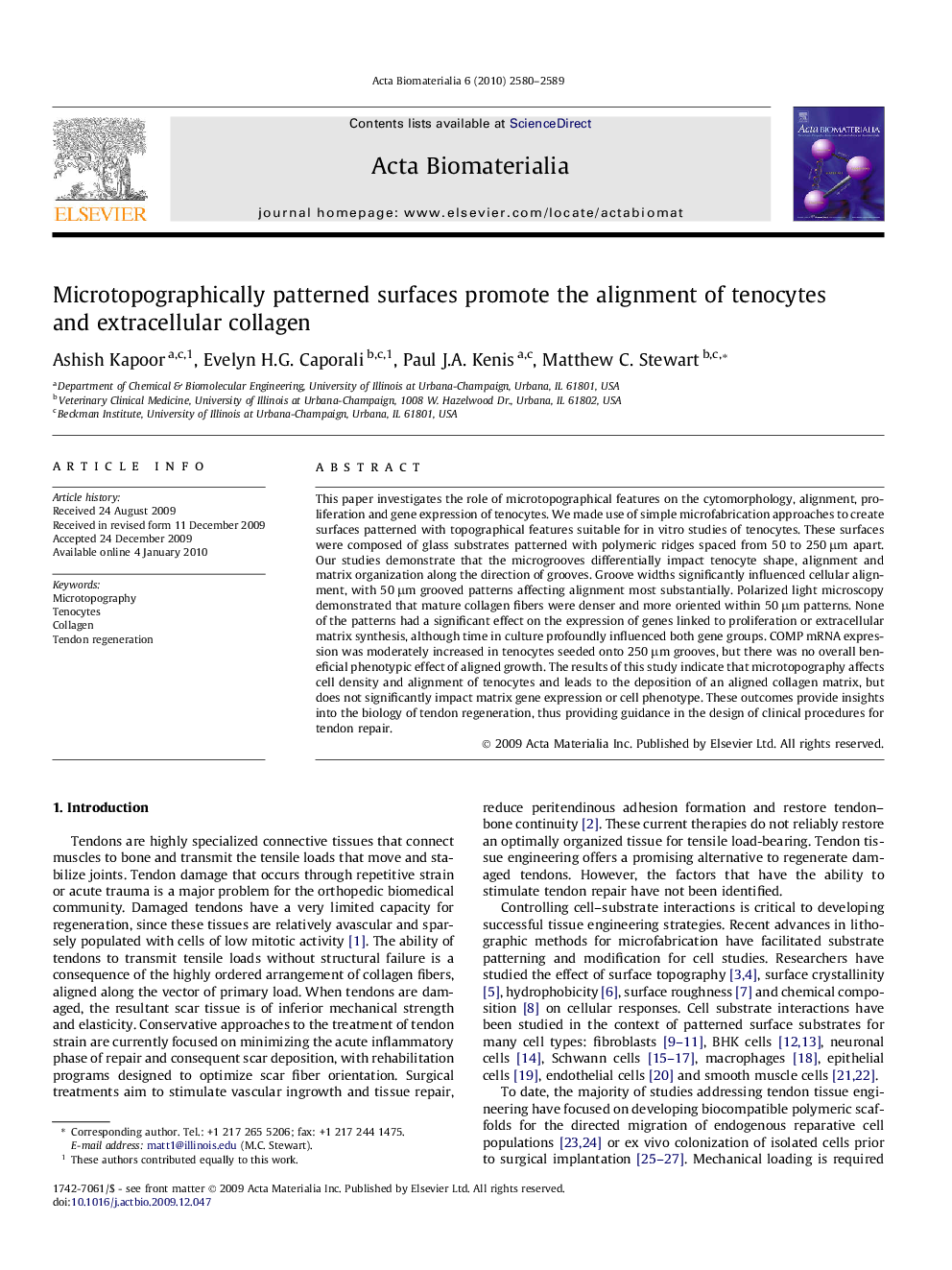| Article ID | Journal | Published Year | Pages | File Type |
|---|---|---|---|---|
| 2435 | Acta Biomaterialia | 2010 | 10 Pages |
This paper investigates the role of microtopographical features on the cytomorphology, alignment, proliferation and gene expression of tenocytes. We made use of simple microfabrication approaches to create surfaces patterned with topographical features suitable for in vitro studies of tenocytes. These surfaces were composed of glass substrates patterned with polymeric ridges spaced from 50 to 250 μm apart. Our studies demonstrate that the microgrooves differentially impact tenocyte shape, alignment and matrix organization along the direction of grooves. Groove widths significantly influenced cellular alignment, with 50 μm grooved patterns affecting alignment most substantially. Polarized light microscopy demonstrated that mature collagen fibers were denser and more oriented within 50 μm patterns. None of the patterns had a significant effect on the expression of genes linked to proliferation or extracellular matrix synthesis, although time in culture profoundly influenced both gene groups. COMP mRNA expression was moderately increased in tenocytes seeded onto 250 μm grooves, but there was no overall beneficial phenotypic effect of aligned growth. The results of this study indicate that microtopography affects cell density and alignment of tenocytes and leads to the deposition of an aligned collagen matrix, but does not significantly impact matrix gene expression or cell phenotype. These outcomes provide insights into the biology of tendon regeneration, thus providing guidance in the design of clinical procedures for tendon repair.
